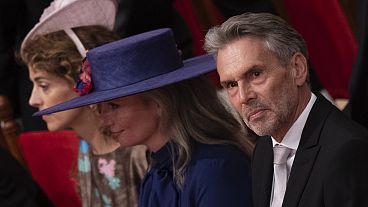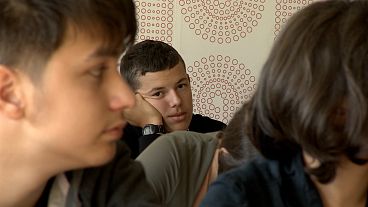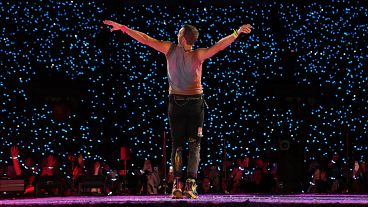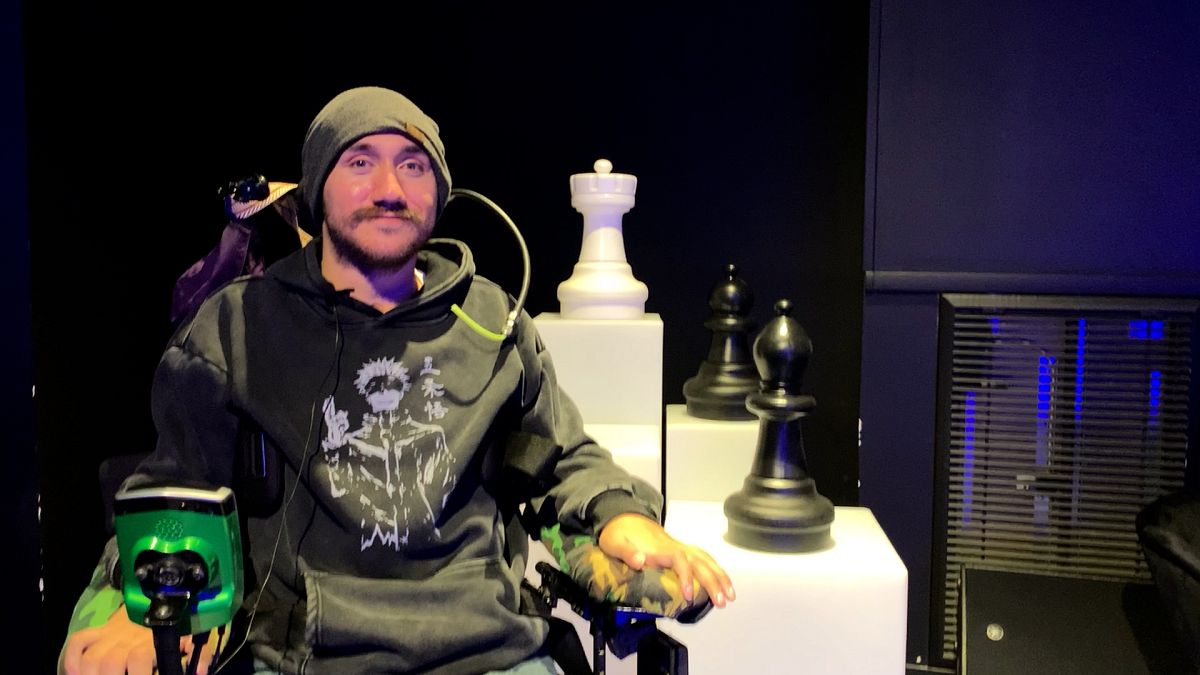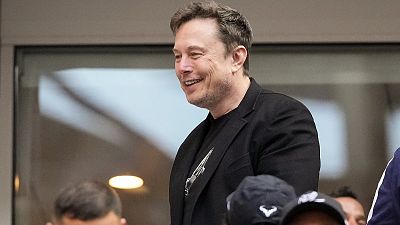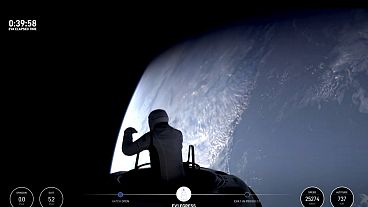Noland Arbaugh spoke to Euronews Next about what he has been doing since the brain implant and his hopes for the future.
Like many Americans, Noland Arbaugh always dreamed of travelling to France and learning the language, but after an accident left him paralysed from the shoulders down eight years ago, he didn’t think it would be possible.
That’s until the world’s richest man helped him out by implanting a chip into his brain.
Arbaugh, now 30, is a patient of Elon Musk’s company Neuralink. He received a brain implant in January and in March, Musk posted a video of him playing online chess by using his mind to control the cursor.
Before the surgery, he would move a cursor with the use of a mouth stick, a specialised assistive device used by quadriplegics.
Eight months after the brain implant surgery, he is in Paris about to open a major speed chess championship.
"Before the Neuralink, it was hard for me to do things like play chess. It puts a lot of stress on my body. I can only play for so long. I might have to be sat up in a certain position," Arbaugh told Euronews Next in Paris.
"Now I can lie in bed if I want to and play chess for hours".
But he is not just using the technology for online gaming. He has been learning French and Japanese.
"I'm sure people will think it's sort of like the Matrix where you can just download things into your brain," he said.
"But really, what it's been doing for me is helping me to interact with my computer better in order to learn things".
Before the brain chip, he would have to learn by watching YouTube videos and it was not as interactive as he couldn’t work from a workbook. He also needed the help of another person to press play and pause, he says.
All that has now changed as he can write, look up French newspapers, and play audiobooks, which he can pause and rewind himself.
"Now I'm just able to learn on my schedule and I'm able to do a lot more, which I think is really important," he said.
But, Arbaugh admits that the best way to learn a language is through immersion.
"I would love to have other people around me who are constantly speaking it. I know that's the best way to learn. Being in Paris is a start," he said.
Looking ahead to the future he said he would like to continue studying.
"I knew for a long time in school I wanted to go to law school. That's something that is still on my radar, something that I think is possible," he said.
"I'd have to go back to school, finish my degree, and then go to law school. So that would be a long process. But I'm hoping and I'm trying to get back there".
He isn’t entirely sure at this point law would be the direction he would want to go in, as being in the Neuralink trial has made him interested in neuroscience.
'Freak accident'
Arbaugh lost movement in his body at the age of 22 after he was working at a summer camp in Pennsylvania.
"It was the first day of the summer. A group of us went to a manmade lake. And it was just a freak accident," he said.
"When I tell people I was injured in a lake, they always think I was jumping off of something like high," he said.
Instead, he remembers running into the lake with a couple of friends where he thinks something accidentally hit him.
He then woke up face down in the water.
"I was conscious for about 15 seconds. I tried to get up but knew I couldn't move," Arbaugh said.
He then spent the next few years in and out of hospitals until he applied for the Neuralink trial but he did have fears about his brain being operated on.
"As a quadriplegic, really all I have left is my brain. And I [thanked] God so much at the beginning of my accident that he left me with my cognitive function, with my brain, because I think that's a huge part of who I am," Arbaugh said.
"Letting someone go in there and root around was not something to take lightly, but I knew that the upsides would outweigh the downsides. I knew that if possible, I would be helping progress this field".
He said that although there is a technological side to the trial and improving what humans are capable of, his first goal is to find a way to help others.
'A cruel joke'
The technology works through a device, the size of a coin, which is surgically implanted into the skull. It has ultra-thin threads that go into the brain, which develop a brain-computer interface (BCI).
The implant can then detect brain activity and send it over to a device such as a computer, through a Bluetooth connection.
But just a month after the implant was put in Arbaugh’s brain, he noticed the technology was not working as well because many of the threads pulled apart from the implant, resulting in a sharp reduction in the electrodes that could measure brain signals.
"There was never a time after surgery where all the threads were in place. They started to move basically immediately after surgery," he said.
"Only a month seemed like a cruel joke, honestly. So it was pretty hard," he added.
However, he rebounded after a couple of days.
"It was the same mindset I had going into the surgery [which] was even if something terrible happened, I know that it'll help make it better for the future," he said.
The second Neuralink patient received his implant in August, and according to Neuralink, has seen no sign of thread retraction.
Arbaugh said now his implant is working very well again as before the focus was on very individual electrodes, on the threads and very specific places and very specific neurons.
"Now they're focused more on groups of them so they can eliminate groups that are sending strong signals and only listen to the stronger ones," he said.
"Once they did that, things got a lot better and they realised that maybe we should have been doing this from the beginning anyways," he added.
As for the future of BCIs, Arbaugh is hopeful and said he believes they could one day let people with paralysis move.
"I know it's possible. I think it's going to happen in my lifetime," he said.


